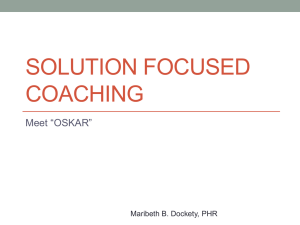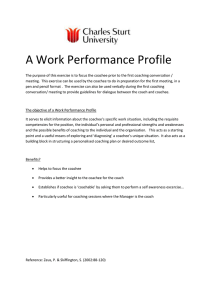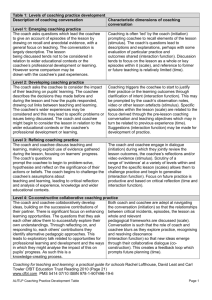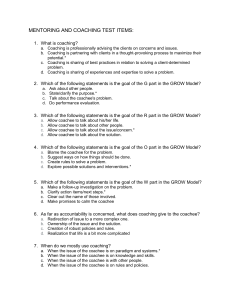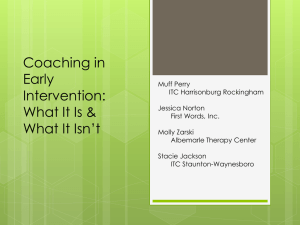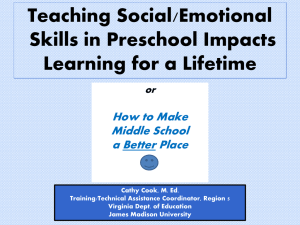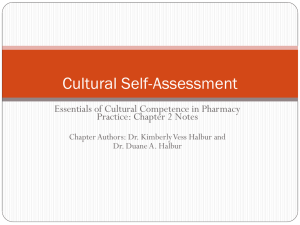Situational Leadership
advertisement
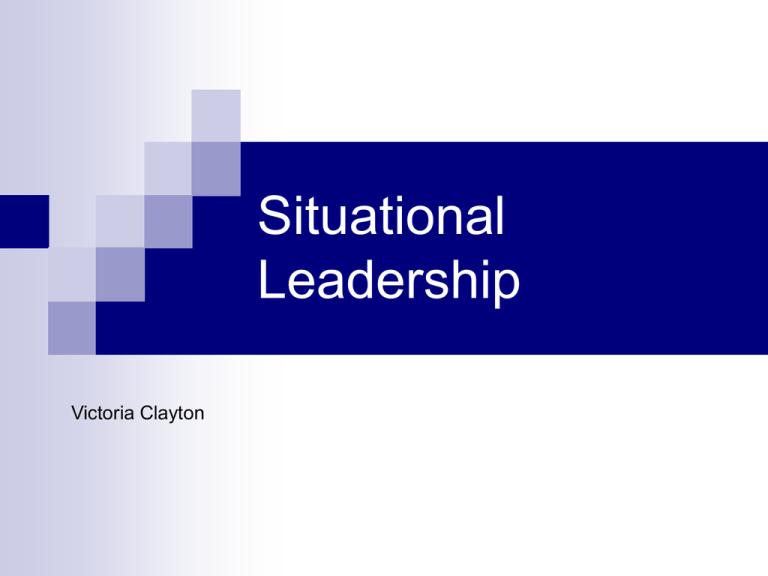
Situational Leadership Victoria Clayton In a nutshell … Leadership theory developed by Paul Hersey and Ken Blanchard Effective leadership is task relevant and is most successful when adapted to the ‘maturity’ of the individual/group. Developed a Situational Leadership model of 4 distinct Leadership Styles based on the amount of direction required and the amount of support required. 4 Development Levels based on the level of competence and level of commitment of the individual/group. The effective leader will adopt the most appropriate leadership style to the situation/task and the development level of the specific individual/group. 4 Development Level Characteristics D4 D3 D2 D1 High Competence High Commitment High Competence Variable Commitment Some Competence Low Commitment Low Competence High Commitment •Has some knowledge & skills, not competent yet •Frustrated •Discouraged, overwhelmed, confused •Developing and learning; needs reassurance that mistakes are part of the learning process •Unreliable, inconsistent •New to task or goal, inexperienced •Eager to learn, willing to take direction •Enthusiastic, excited, optimistic •Confidence based on hopes and transferable skills, not reality •Recognised by others •Is generally self-directed, as an expert but needs opportunities •Consistently competent; to test ideas with others justifiably confident •Sometimes hesitant, •Trusts own ability to work unsure, tentative independently; self-assured •Not always confident; self •Inspired; inspires others critical; may need help •Proactive; may be asked to in looking at skills do too much objectively •May be bored with goal or task •Makes productive contributions 4 Leadership Styles & Behaviours HIGH S2-Coaching S3-Supporting Supportive Behaviour LOW Exploring/asking Explaining/clarifying Redirecting Sharing feedback Encouraging Praising Asking/listening Reassuring Facilitating self-reliant problem solving Collaborating Encouraging feedback Appreciating S4-Delegating Allowing/trusting Confirming Empowering Acknowledging Challenging S1-Directing Defining Planning Orientating Teaching/showing & telling how Checking/monitoring Giving Feedback Directive Behaviour HIGH How can the model be used by the coach? As part of the diagnostic stage to determine whether coaching is the most appropriate intervention for the individual given their stage of development in relation to the task/situation – competence/commitment? To assist the coach in clarifying the purpose of the coaching session/s – developmental, performance or transitional? If the coach has an understanding of the individual’s development level in relation to role/the task the coach can adopt the most appropriate style of coaching - the continuum from directive to nondirective (pure). The coach can use the model to develop the coachee by using successive leadership styles. How can the model be used with the coachee? To explore with the coachee their own level of competence and level of commitment for an upcoming task or a task that they are finding challenging. Are they getting what they need from their own manager? How can they influence this? To facilitate discussion with the coachee about their own development journey using the development level characteristics and descriptors – What is their level of self awareness? How does this fit with the other evidence they have available? e.g. 360 degree feedback, appraisal, manager feedback. How will they move through the quadrants – is it competence or commitment? Gap analysis. To consider with the coachee how they might want to approach a forthcoming task with a group or individual – have they considered the leadership style that will be most appropriate? How did they arrive at that judgement? Use the model to provide structure for experiment and review. To explore with the coachee how the model may help to explain the current behaviours of a group/individual in response to their leadership style. How can they adapt their leadership style to drive the required results? To work with the coachee to identify their dominant/preferred leadership style – where are they most comfortable?/do they have an over-reliance on a particular leadership style?/how adaptable are they?
